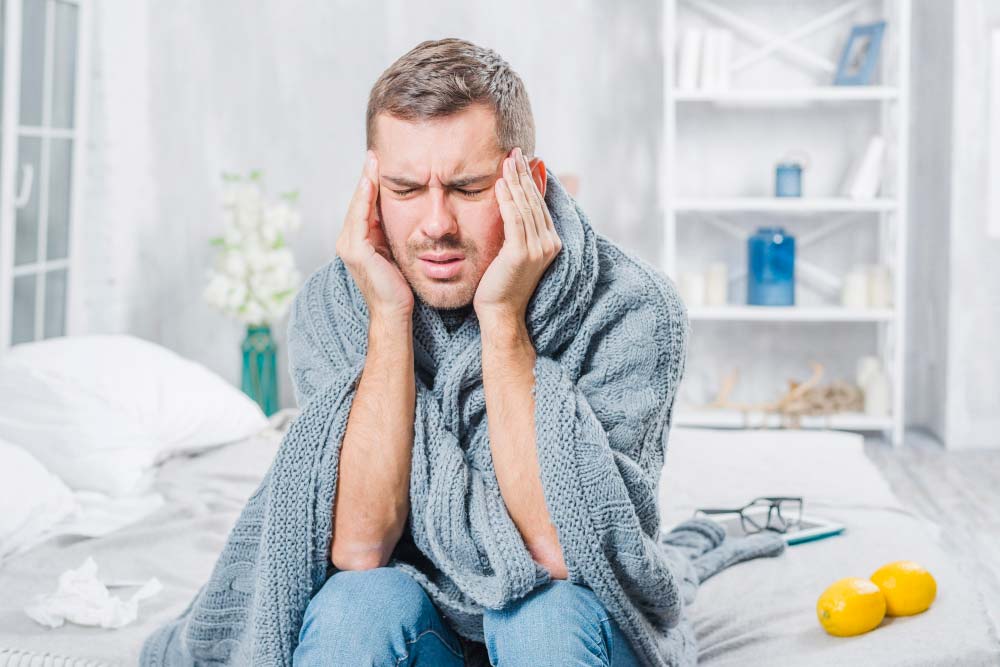Cluster headaches are one of the strangest yet most painful conditions. The headaches are sudden and intense, and the sufferer can generally only recognise them as “cluster headaches” in hindsight. Cluster headaches are the most common type of primary headache and affect up to 1% of the population. The causes are unknown, though they are thought to result from the sympathetic nervous system becomes overactive.
Cluster headaches are severe headaches that can last for days or even weeks. They generally occur in clusters, or episodes, of about 15 days, though they can also occur as isolated episodes lasting several days. It is very important to seek treatment as soon as possible for cluster headaches since once the headache starts, one episode is usually followed by another. If you’re looking for additional treatment options for cluster headaches, you can check out clinical trials at Power.
Here Are Facts About Cluster Headaches
Did you know that cluster headache is very rare and unique?
Cluster headache (CH) is a relatively rare, chronic (long-term) type of headache, usually affecting men more than women. It is characterized by regular attacks of moderate to severe pain, which tend to recur at short periods of time, usually 15 to 90 days. CH tends to be bilateral (affecting both sides of the head simultaneously) and is usually associated with other symptoms such as nasal congestion, fever, and sensitivity to light or sound.
Cluster headaches are a rare form of episodic, painful headaches, sometimes dubbed “suicide headaches,” because they tend to occur on waking and can last for 15 to 180 minutes. Unlike migraines and tension headaches, cluster headaches tend to affect one area of the head, usually the forehead. In some cases, they can occur throughout the entire head, face, and neck. Cluster headaches are devoid of aura, meaning that they attack without warning.
There is no scientific evidence of what really a cluster headache cause.
Cluster headaches are extremely painful, and cluster headache sufferers often find themselves unable to work simply because the pain is so bad. Cluster headaches are so excruciating that sufferers often experience nausea, vomiting, and even faintness. Cluster headaches are extremely painful and debilitating, but doctors aren’t sure what causes them.
Cluster headaches are the type of headache doctors hate to treat. Finding the cause of cluster headaches and how to stop them has been challenging.
Cluster headaches are also called suicide headaches.
Cluster headaches are also known as “suicide headaches” simply because the sufferer often has no warning that an attack is coming. Cluster headaches are a type of headache that repeatedly attack, usually for months or weeks each time. Sometimes, a cluster headache can be so severe that sufferers experience periods of temporary blindness, nausea, vomiting, and even paralysis.
Cluster headache has no specific cure.
Cluster headache has no specific cure, and no treatment can completely eradicate the symptoms. Many people who contract the bug suffer from it for the rest of their lives. However, there are things you can do to relieve symptoms and reduce the frequency and severity of attacks that have the potential to help calm your head. Doctors can prescribe drugs such as sumatriptan or lidocaine, which sufferers can also use to prevent or lessen cluster attacks.
You will experience extreme pain or excruciatingly painful feeling due to cluster headaches.
Cluster headaches are an extremely painful, excruciating type of headache that can last for up to 30 minutes at a time. They are different from migraines, which tend to involve throbbing or pulsing pain, but cluster headaches are completely different. While migraines come in wave after wave, cluster headaches happen sporadically. The pain is often described as excruciating, with patients reporting feeling as if they are being stabbed or burned inside the skull.
Cluster headaches strike a person repeatedly.
Cluster headaches rarely occur in groups of more than two people at the same time but affect one person repeatedly at regular intervals, usually occurring once a month. The headaches can last for hours or days and are often very debilitating. Because of the nature of the pain, cluster headaches can interrupt a person’s routine and damage personal relationships.
Most men are affected.
A cluster headache is a severe head pain that occurs in clusters, or short bursts of intense pain, at regular intervals. It is often accompanied by nausea, vomiting, and sensitivity to light. Usually, cluster headaches affect men more often than women, and most people experience their first attack between the ages of 17 and 40. The peak age of onset is 30 to 40, and the symptoms typically last less than 15 minutes.
Cluster headaches begin without warning.
Cluster headaches are a disabling type of headache that strikes suddenly and without warning. These headaches are potentially life-threatening, and sufferers can experience migraines, vomiting, and sensitivity to light.

